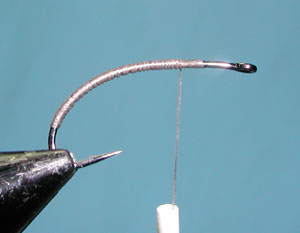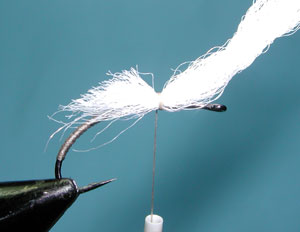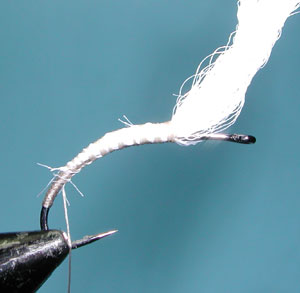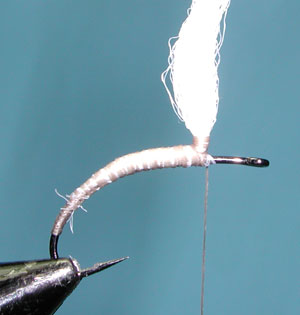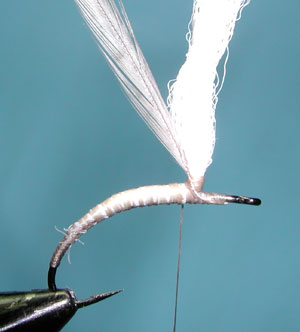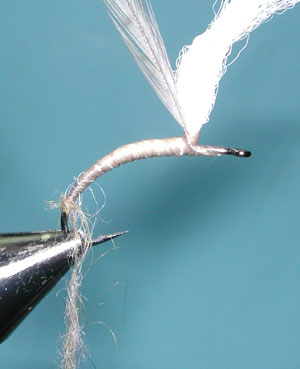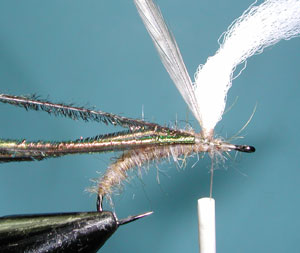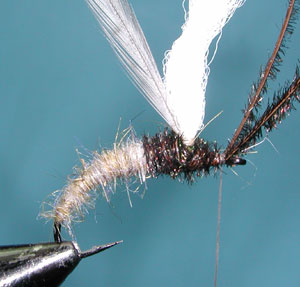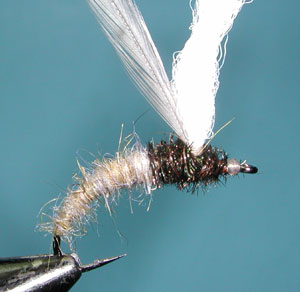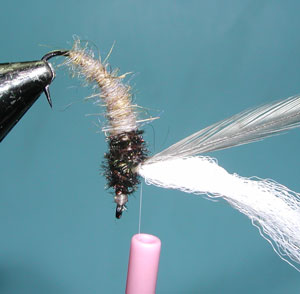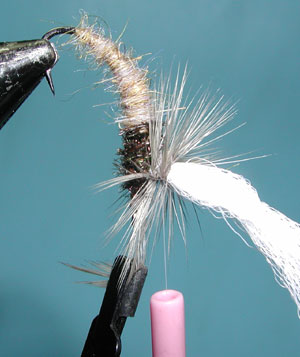Klinkhamer Special – observe with innovation
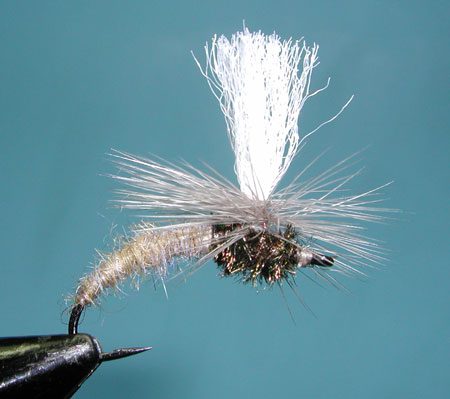
Klinkhamer Special, Tan
Tying Instructions
| Materials
to Order Material, click the link |
|
|---|---|
| Hook | Daiichi 1160 #8-14 |
| Thread | Uni-thread Tan 8/0 |
| Body | Tan Superfine |
| Thorax | 3 strands Peacock Herl |
| Tail | 6-12Med. Dun Spade Hackle Fibers |
| Wingpost | White Poly Yarn |
| Hackle | Medium Dun tied off with Spiderweb thread |

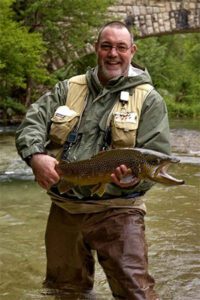
Hans Van Klinkhamer
Klinkhamer Special
Dutch fly fisherman and fly tier, Hans Van Klinken, came up with this pattern in 1984 along the Glomma River in Norway. He noticed that most of the graylings were being caught with dry flies that were weighted to sink into the surface film. Upon examining one of the graylings, Hans also noted the abundance of large curved caddis larvae within the stomach contents. These observations led Hans to tie a caddis larvae pattern onto a scud hook and submerge the pattern into the surface film by using a parachute hackle and floatable wingpost.
Hans first Pattern
Hans called his pattern L.T. Caddis (L.T. for Light Tan) but later, friends started using the name Klinkhamer Special and the name stuck. It came to the attention of Sierra fly fishermen during the early 2000’s through a number of articles examining the pattern. Recently, the pattern has seen a resurgence in interest, since Partridge introduced their Klinkhamer hook and the hooks became locally available. The pattern is designed to be used as an emerger dry (if you have difficulty locating these hooks, try substituting a TMC 200R and put a 30 degree bend about 1/3 from the eye along the shank).
Although originally tied as an emerging caddis larvae, the pattern can also be adapted to many of our mayfly emergers as well. The Klinkhamer has a very visible wing post made of floatable yarn that allows the fly fisherman to see the fly easily. The hook design allows the pattern to lie deep within the surface film and is very stable due the heavy parachute hackle wound above the thorax.
Materials to use
Hans has had over 20 years to refine this pattern and has come up with the following points with regard to the materials one chooses to tie this fly.
- Hackle: Use a high-quality hackle with stiff fibers. Apply at least 5 wraps on sizes 16-18 and 8 wraps on sizes 10-14. The hackle can be oversized and kept horizontal to achieve good floatation.
- Wing: Use a floatable poly yarn for the wing post. It can be of any color you please, to sight the most easily. Hans prefers Niche Silicon Yarn for size 16 and smaller. The wing should be long, about the length of the hook shank.
- Abdomen: Hans prefers Extra Fine Poly Fly Rite Dubbing for sizes 14 or larger, and Wapsi Superfine for size 16 or smaller. The important thing is to apply the dubbing sparsely. You want a thin body.
- Thorax: The thorax should be much larger than the abdomen. Hans uses 3 strands of peacock hurl but also suggests Peacock-colored dubbing as a substitute.
- Hook: Originally the pattern was tied on a Partridge Yorkshire Caddis hook. Partridge designed a better hook style from Hans input, the 15BN and 15BNX. These hooks give the proper wide gape and have a straight eye that allows the hook to hang vertically in the water column.
Alternative Technique
Hans also came up with an easier technique to tie the parachute hackle using Spiderweb thread. The tie off is around the wing post at the base where it is protected by the wing material from getting ripped open by the trout’s teeth. This is a marked improvement from typically tying the hackle off just behind the eye.
Variations

PMD Klinkhamer
| Hook | Daiichi 1160 #8-14 |
| Thread | Uni-thread Pale Yellow 8/0 |
| Body | PMD Superfine Dubbing |
| Thorax | 3 strands Peacock Herl |
| Wingpost | White Poly Yarn |
| Hackle | Ginger Hackletied off with Spiderweb thread |
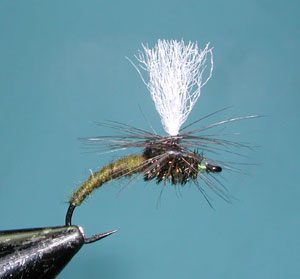
BWO Klinkhamer
| Hook | Daiichi 1160 #8-14 |
| Thread | Uni Thread 8/0 Gray |
| Body | Light Cahill Dyed Quill |
| Thorax | 3 strands Peacock Herl |
| Wingpost | White Poly Yarn |
| Hackle | Medium Dun Hackletied off with Spiderweb thread |

